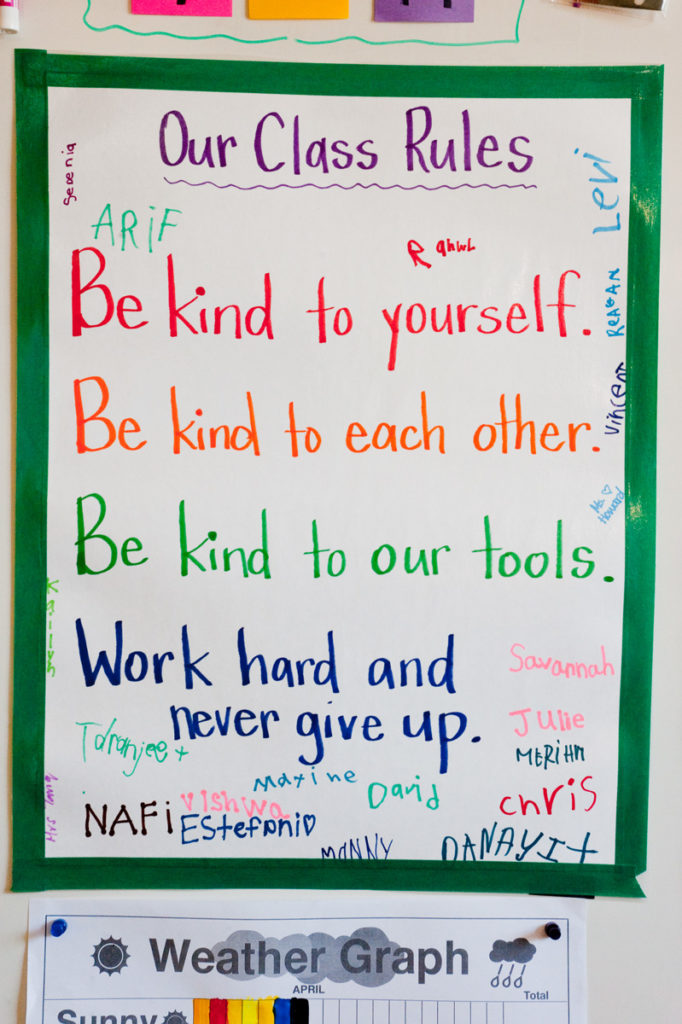
Creating classroom rules is an essential step in building a supportive, respectful learning environment, but the work doesn’t stop there. Revisiting those rules throughout the school year helps students stay focused, renews their investment in the learning community, and reinforces shared expectations. Educators can tailor this process to their students’ developmental needs, schedule transitions, and classroom dynamics. Below are several effective strategies used by Responsive Classroom educators.
There are strategic points in the school year in which a formal review of the rules can prevent off-task behavior and support classroom cohesion. For example, conducting check-ins after the first six weeks of school, before winter break, and before spring break helps reinforce expectations during potentially challenging times. These rule check-ups serve as proactive reminders and opportunities for adjustment.
To make the process engaging and meaningful, have students offer their opinions about how the rules are working. Initially, you might have students submit anonymous written reflections. Later in the year, as community trust grows, you can hold open class discussions where students voice thoughts and concerns freely. These conversations deepen students’ ownership of the rules and their role in maintaining a positive learning environment.
Special events or schedule changes, such as rehearsal periods or schoolwide performances, can lead to disorientation and a lapse in expected behaviors. Music and specials teachers can support students in returning to regular classroom norms by revisiting rules at the end of these transitional periods.
A brief, ten-minute rule review can be enough for specials teachers to reset expectations. Consider rereading the class rules together, then open a discussion with questions like “Are these rules still working for us?” or “Do we need to adjust anything?” Even if no changes are made, this reflection reinforces that rules are dynamic tools for maintaining a positive classroom climate and can evolve when necessary.
Because it is the new calendar year, and because it comes directly after winter break, January provides a natural opportunity to reconnect students with both their individual goals and the class’s shared agreements. As students reflect on whether they’ve achieved their original hopes and dreams and consider new ones, you can guide the class through a rule-creation process similar to the beginning of the year.
Asking questions such as “What rules will we need to help everyone meet their hopes and dreams for the rest of the year?” can prompt students to think critically about their learning behaviors and classroom needs. Even when the class decides to keep the existing rules, the process helps rebuild community after the winter break and reaffirms the shared purpose behind classroom expectations.
Ramona McCullough, Jen Hansford, and Betsy Godin Conz contributed to this article.